A real revolution in the cosmetics industry, solid shampoo already has many followers. Practical, ecological, and ultra-soft, there are now some for all types of hair. Easy to craft, learn how to make your own solid shampoo at home. In the first part, learn how to make your solid shampoo. Then in a second part, discover 5 recipes to make your homemade solid shampoo according to your hair type.
In this section:
How to make your homemade solid shampoo?
Choose your ingredients to make your solid shampoo yourself
To make your solid shampoo, there are different types of ingredients but you will often find this composition:
Surfactants + Aqueous base + Oils or butters + powders of plants or mineral plants (+ co-emulsifier) (+ cosmetic active ingredients)
Now you just need to choose the ingredients in your solid shampoo that match your needs and your hair.
Surfactants
The surfactants have the role of lathering your solid shampoo while cleaning your hair. There are many, however we recommend that you use one of the three below which has an excellent wash / foam ratio:
- Sodium Coco Sulphate. A mild surfactant derived from coconut oil. Its advantage is that it allows the shampoo to lather a lot.
- Sodium Cocoyl Isethionate (SCI). One of the softest surfactants on the market, however, it provides a less dense lather.
- SLSA (Sodium Lauryl Sulfoacetate). Soft surfactant.
 Recommended dosage: 40 to 70% of the total preparation, i.e. between 40 and 70g for a 100g solid shampoo.
Recommended dosage: 40 to 70% of the total preparation, i.e. between 40 and 70g for a 100g solid shampoo.
The aqueous base
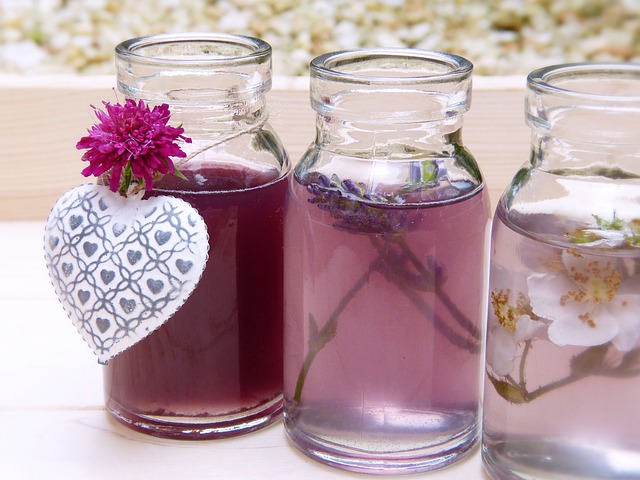
The aqueous base is useful when preparing solid shampoo. It dissolves the surfactant. You can addmineral water or hydrolate (lavender, rose, witch hazel, rosemary, etc.) with nutritional or moisturizing properties.
 Recommended dosage: 10 to 20% of the total preparation, i.e. between 10g and 20g for a 100g solid shampoo.
Recommended dosage: 10 to 20% of the total preparation, i.e. between 10g and 20g for a 100g solid shampoo.
Vegetable oils or butters
Vegetable oils or vegetable butters can nourish and hydrate your hair. Choose them according to your hair type and their needs.
Vegetable oils to make your solid shampoo : suitable for several types of hair.
- Sweet almond oil. Rich in vitamin E, it is perfect for hair with dandruff and for sensitive scalps thanks to its soothing function.
- Argan Oil. Ideal for dry, damaged, brittle and dull hair, It helps treat hair problems such as hair loss or dandruff.
- Avocado oil. It nourishes the hair fiber. Recommended for dull and dry hair, and hair loss because it stimulates growth.
- Coconut oil. Moisturizes the hair deeply by penetrating the hair fiber. Ideal for dry hair. Brings shine, tone and vigor.
- Jojoba oil : Perfect for oily hair because it regulates sebum. Gives shine, suppleness vitality, and prevents hair loss.
- Nuts oil : Ideal for treating excess sebum and therefore for oily hair.
- Castor oil : Nourishes, accelerates growth, strengthens hair. It is perfect for very dry and frizzy hair.
- Grapeseed Oil. Perfect for fine, damaged and brittle hair.
- Broccoli Oil : Ideal for curly hair. Makes hair supple and shiny.
- Macadamia Oil : Both nourishing, healing, perfect for irritated and sensitive scalps; it does not leave a greasy film and protects against UV rays.
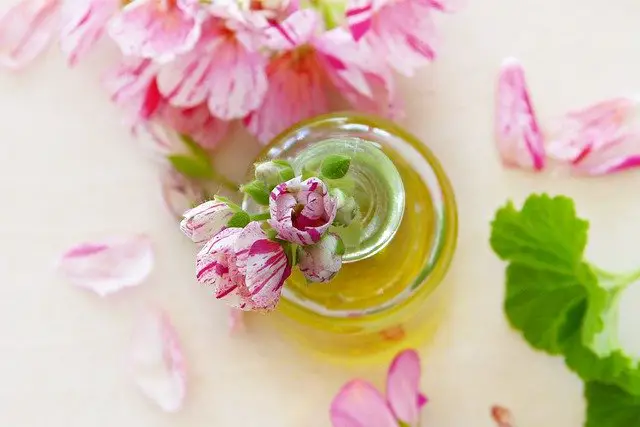
Vegetable butters to make your own solid shampoo : suitable for dry, curly, frizzy, frizzy hair.
- Shea Butter. Perfect for very dry, frizzy, frizzy hair that has a tendency to break and have split ends.
- Mango Butter. Recommended for dry, damaged, brittle, split ends, coarse, dull, and frizzy hair.
- Sal butter : For dry, dull and frizzy hair.
- Kokum butter : Ideal for dry and damaged hair.
 Recommended dosage: 10 to 20% of the total preparation, i.e. between 10g and 20g for a 100g solid shampoo. Vegetable oils and butters are used to nourish the hair. However, they tend to weigh down the roots, especially if you tend to have oily hair. In this case, it is better to reduce the dosage of oil or butter and increase the dosage of powders which have the properties of nourishing the hair while washing them.
Recommended dosage: 10 to 20% of the total preparation, i.e. between 10g and 20g for a 100g solid shampoo. Vegetable oils and butters are used to nourish the hair. However, they tend to weigh down the roots, especially if you tend to have oily hair. In this case, it is better to reduce the dosage of oil or butter and increase the dosage of powders which have the properties of nourishing the hair while washing them.
Ayurvedic, herbal or mineral powders
The powders are ideal for nourishing your hair, while having cleansing, cleansing and purifying properties. Choose one that is suitable for your hair.

- shikakai : This powder gently cleanses your hair, without attacking it. In hair care, it brings vigor, strength and shine and it makes the hair silky. It promotes hair growth and prevents hair loss. It is also recommended against dandruff and itching.
- Clay powder : Clays are perfect against oily hair thanks to their purifying and sebum-regulating properties.
- Stinging Nettle Powder : Ideal for brittle hair, with an oily tendency, to fight dandruff. It is a hair fortifier that prevents hair loss.
- Rasul : Purifying and gentle cleanser that absorbs impurities without irritating the skin. Ideal for sensitive scalps.
- Neem powder : Purifying, detoxifying and helps fight dandruff.
- Neutral henna : For all hair types, it gives them tone and shine without coloring them. Cleanses oily scalps and helps fight dandruff. Do not use it if you have any coloring.
- Ayurvedic Brahmi powder : It promotes growth by strengthening the hair roots. Gives density, softness and shine to the hair. Ideal for a sensitive and irritated scalp.
- Sidr powder : Recommended for blond hair, it purifies the scalp and soothes itching while effectively fighting dandruff.
- Orange powder : Tones and strengthens the hair. It makes the hair shiny, soft and supple. For all hair types.
 Recommended dosage: 15 to 20% of the total preparation, i.e. between 15g and 20g for a 100g solid shampoo.
Recommended dosage: 15 to 20% of the total preparation, i.e. between 15g and 20g for a 100g solid shampoo.
Essential oils
Essential oils are optional in the recipe as some people are intolerant of them and this can cause scalp irritation, dandruff and hair loss. In addition, they are not recommended for young children and pregnant women. Make sure you always stick to the recommended dosages!
Choose the essential oils you want to add to your homemade solid shampoo based on your hair type.
- Greasy hair : Cypress, Lavender, Tea Tree, Clary sage, Rosemary with cineole, Bay Saint Thomas, Lemon, Geranium rose.
- Dry hair : Sweet orange, Lavender, Sandalwood, Rosemary with cineole, Ylang Ylang.
- Anti dandruff and itching : Bergamot, Cade, Tea Tree, Lemon Eucalyptus, Orange, Bourbon Geranium, Palmarosa, Atlas Cedar, Sandalwood.
- Hair loss : Sage, Rosemary, Grapefruit, Peppermint, Lemon, True Lavender, Palmarosa, Bay Saint Thomas.
- Dull, damaged and brittle hair : Laurel noble, Rosewood, Chamomile, Clary sage, Lavender, Sandalwood.
- Scalp Toner : Rosemary with cineole, Niaouli, Laurel noble, Bay Saint Thomas, Lemon, Chamomile, Ylang Ylang.
 Recommended dosage: Do not exceed 1% of your recipe, i.e. between 20 and 30 drops of essential oils of your choice for a 100g solid shampoo.
Recommended dosage: Do not exceed 1% of your recipe, i.e. between 20 and 30 drops of essential oils of your choice for a 100g solid shampoo.

Co-emulsifiers
Co-emulsifiers are recommended if you want your solid shampoo to be lather, but not to make your shampoo too soft. They are particularly recommended if you make your shampoo with SCI surfactant. There are several, but the ones that have a very good effect are:
- Cetearyl alcohol : It is a mild emulsifier. It is used to thicken and stabilize the shampoo. It is therefore a consistency agent that will allow the solid shampoo to be more compact and therefore prevent it from breaking. We advise you to respect a dose of 0.5 to 2.5% for the purpose of your recipe. It melts from 50 degrees. We advise you to add it to your preparation at the same time as the surfactants.
- Cetyl alcohol : is a co-emulsifier which is used in your preparation as a consistency agent to stabilize the emulsions and modulate the texture of the solid shampoo. It thickens it and therefore makes the pebble firmer and prevents it from breaking. We recommend that you use it in your recipe at 2 to 5% and incorporate it when mixing with the surfactants.
Use one or the other but not both in your recipe as they serve the same role of thickener and stabilizer. If you have a preparation with a fairly high percentage of surfactant (more than 40%), use cetyl alcohol, which is co-emulsifier and which is very sufficient as a supplement.
Addition of cosmetic active ingredients
You can add cosmetic active ingredients in your preparation having different moisturizing or nutritional properties. Among the best known and most used:
- Phytokeratin : Allows to deeply hydrate the hair. Ideal for dry, very dry and frizzy hair. Makes hair shiny, soft and silky.
- Liquid Silk Proteins : Ideal for straightening hair, giving it suppleness and preventing frizz.
- Honey powder : To strengthen and repair damaged hair. Moisturizes the hair.
- Silk powder : Allows to moisturize and coat the hair. Smoothing effect.
 Recommended dosage: 5% of your recipe, i.e. 5g for a 100g solid shampoo.
Recommended dosage: 5% of your recipe, i.e. 5g for a 100g solid shampoo.
The preparation to make your homemade solid shampoo

Be careful when handling the ingredients. We recommend that you wear gloves, and eye protection if possible. Especially if you handle the SCI surfactant which is very volatile.
What material to use to make your solid shampoo?
- A precision balance
- A bowl that goes in the microwave or bain-marie. Prefer the preparation in a bain-marie to obtain a solid shampoo of better quality
- A wooden spoon or stick for mixing or a stainless steel whisk
- A pestle
- One or more mussels
The solid shampoo recipe
- Put the solid surfactants, water base, vegetable oil (s) or vegetable butter in a bowl going in a bain-marie. If you have opted for the addition of co-emulsifier or cosmetic active ingredients, put them with.
- Melt the whole over low heat and stir throughout the preparation with a wooden spatula until a sticky and homogeneous paste is obtained (20 to 40 minutes in a double boiler). You can use a pestle to crush ingredients that have a hard time melting or dissolving like surfactants for example.
- Once the mixture has melted and the dough is obtained, remove the preparation from the double boiler, and add the powders et essential oils if you have decided to put some, by mixing using the spatula or pestle.
- Once the preparation has cooled slightly, knead your dough to distribute the essential oils well.
- Before the dough cools, transfer the dough into your mold (s) and pack well.
- Leave your preparation in the molds between 2 minimum hours up to one day at room temperature. We recommend that you do not place them in the refrigerator to prevent them from weakening or crumbling.
- Unmould your solid shampoo when it has become very hard and let it air dry (room temperature) for at least 3 days and up to a week to prevent it from melting too quickly.
Recipe ideas to make your own solid shampoo
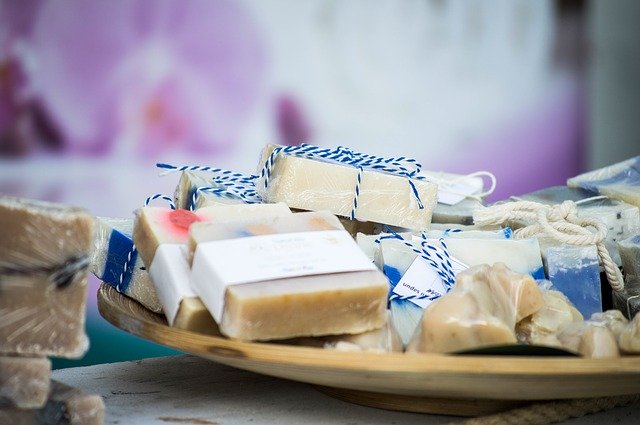
There are many recipes for homemade solid shampoo. You can also try to make your own recipe, by respecting the dosages stated above. You can also draw inspiration from 5 personalized recipes below, depending on hair type.
Each solid shampoo offered will be 100 g. In addition, we have selected in our solid shampoo recipes the surfactant SCI, the mildest on the market formulated without sulfates and biodegradable.
Make a solid shampoo for all hair types
What ingredients to make your solid shampoo for all types of homemade hair?
- 50 g SCI surfactant
- 20 g of Jojoba vegetable oil
- 12 g Shikakai powder
- 8 g of orange powder
- 10 g of an aqueous solution of your choice
Make your solid shampoo for oily hair
What ingredients to make your homemade solid shampoo for oily hair?
- 50 g SCI surfactant
- 10 g of Rhassoul powder
- 5 g of white clay powder
- 10 g of hazelnut vegetable oil
- 10 g of jojoba vegetable oil
- 15 g of aqueous solution
- 15 drops of essential oil Rosemary with cineole (optional)
Make your solid shampoo for dry hair
What ingredients to make your homemade solid shampoo for dry hair?
- 40 g SCI surfactant
- 10 g Green clay
- 10 g of stinging nettle
- 15g coconut oil
- 5 g avocado oil
- 5 g of phytokeratin
- 15 g of an aqueous solution of your choice
- 10 drops of Ylang Ylang essential oil (optional)
Make your solid anti-dandruff shampoo
What ingredients to make your homemade solid anti-dandruff shampoo?
- 50 g SCI surfactant
- 10 g of Shikakai powder
- 5 g stinging nettle powder
- 10 g of Neem powder
- 10 g Sweet Almond oil
- 15 g of aqueous solution of your choice
- 10 drops of Atlas Cedar essential oils (optional)
Make a solid shampoo for sensitive scalp and hair loss
What ingredients to make your homemade solid shampoo for sensitive and irritated scalp? This solid shampoo recipe can also be performed in case of hair loss.
- 40 g SCI surfactant
- 10 g of Rhassoul powder
- 10 g Brahmi Ayurvedic powder
- 15 g of Macadamia vegetable oil
- 10 g of sweet almond vegetable oil
- 15 g of aqueous solution
- 15 drops of Bay Saint Thomas essential oil (optional)
If you want to test the solid shampoo before you jump into the preparation, you can get ready-made solid shampoos on the market. There are more and more brands that are embarking on the production of these zero waste shampoos. And also more and more stores that sell them … Enough to find your happiness easily! If you are unsure, discover our selection of best solid shampoos for your hair type.

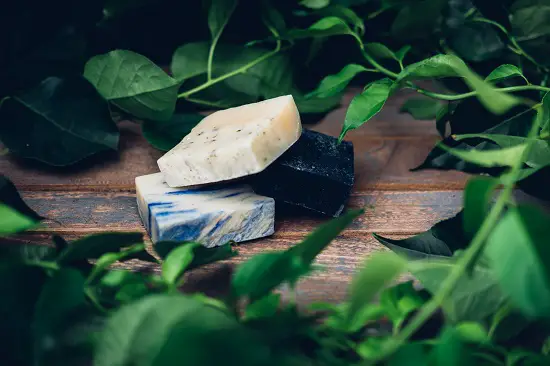
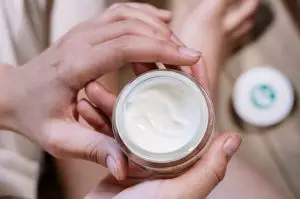
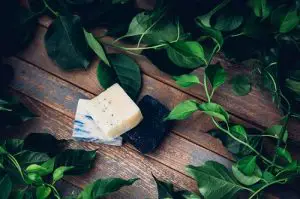
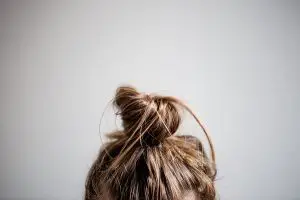
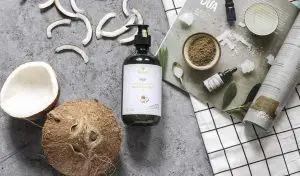
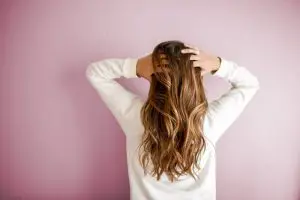
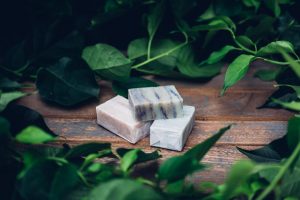
hi, really thanks for your helpful information ,, I am trying to make a shampoo bar for myself, I need more detailed information ,, do you suggest any book in this thema?
Hello,
No I do not offer a book on this theme, I only have this blog but thank you for your interest in my work and my site, it makes me extremely happy 🙂
you can find lots of very interesting books on the theme of solid shampoo and DIY.
Thank you again for your nice comment.
Muchas gracias por compartir todos tus conocimientos, me ha servido de mucho.
Seguiré you página porque encanta me !!
Thanks for your nice comment! It's a pleasure to be able to share my knowledge and what I like, and in return to know that it helps a few people 🙂 Thanks again, your comment made me feel good!
Hello, thank you for sharing these recipes!
I have some questions..
If I don't have jojoba oil or shikakai powder or orange powder, can I use argan oil or calendula oil instead? How many grams?
How to know exactly the grams for which oil and which surfactants? And what to mix and what not? Where do you find your bases?
Because when I see a recipe and I have some of the ingredients and I don't have others, I feel a little unsure about the grams.
Hello,
You can completely replace the oils and powders present in the recipes with other oils and powders more suited to your hair or to what you have in your cupboards. I advise you to do the same dosages, or slightly lower for the oils if they have a thicker consistency. This is the case for example for castor oil.
Then with regard to the weight, I indicated the recommended proportions for each ingredient in the article. Note that the advantage of making your own solid shampoo is that it does not require being a chemist, and therefore respecting an extremely precise dosage 🙂 We advise you to take a recipe that suits you, and adapt it to your own products. Personally I find my bases on https://www.mycosmetik.fr/.